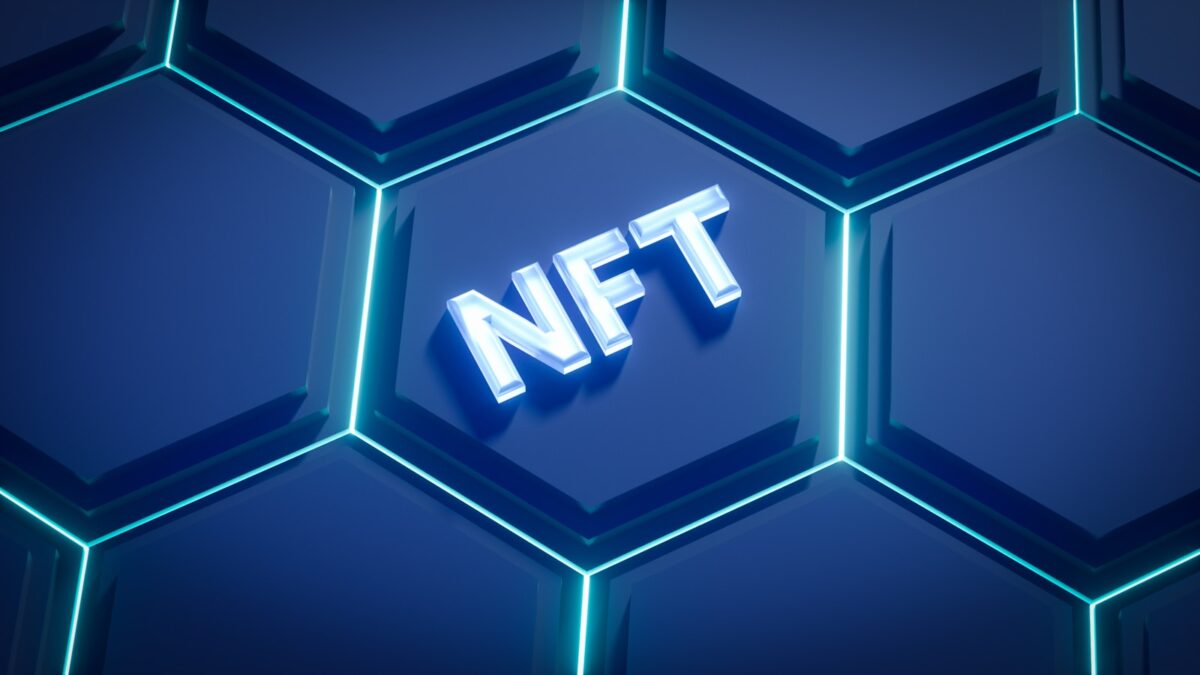
Cross-chain bridges explained

To move assets between distinct blockchains, specialized mechanisms enable seamless interoperability by wrapping tokens. These wrapped tokens represent original assets on a foreign network, preserving value while adapting to different blockchain protocols. This process relies on connectivity solutions that lock the original asset and issue an equivalent wrapped token elsewhere, allowing users to utilize their holdings across multiple environments.
Such interoperability frameworks operate through network connectors that verify and synchronize state changes between chains, ensuring secure and trust-minimized transfers. By employing cryptographic proofs and consensus validations, these systems maintain asset integrity without requiring centralized intermediaries. Exploring how these mechanisms achieve cross-network communication reveals practical methods for expanding decentralized application capabilities.
Implementing multi-chain asset exchange involves understanding the roles of custodial contracts, relayers, and validators in facilitating token wrapping and unwrapping. Experimenting with various implementations provides insights into transaction finality times, fee structures, and potential vulnerabilities related to liquidity or bridge security. Investigating these dimensions offers a foundation for designing robust solutions enhancing blockchain ecosystem interconnectivity.
Cross-Chain Connectivity: Unlocking Token Transfer Between Different Blockchains
To enable seamless transfer of tokens between different blockchains, interoperability mechanisms must ensure secure and reliable connectivity. Specialized protocols facilitate this by converting assets into wrapped representations on target networks, preserving value while adapting to diverse consensus rules. For example, when transferring an asset from Ethereum to Binance Smart Chain, the original token is locked in a contract on Ethereum, and an equivalent wrapped token is minted on Binance Smart Chain. This process maintains a 1:1 peg and prevents double-spending.
Such inter-network connections rely on decentralized validators or relayers that monitor activities across chains and enforce state synchronization. The effectiveness of these systems depends on cryptographic proofs and consensus compatibility, minimizing risks like double locking or fraudulent minting of wrapped assets. Practical implementations include protocols using light client verification or threshold signatures to validate cross-ledger events without requiring full node operation on all connected blockchains.
Technical Structures Enabling Token Movement Across Diverse Ledgers
The fundamental architecture involves locking the original asset within a custody contract on the source chain while issuing an equivalent wrapped token on the destination chain. This approach supports not only fungible tokens but also non-fungible assets by encapsulating metadata in the wrapping mechanism. For instance, Wrapped Bitcoin (WBTC) represents BTC as an ERC-20 token on Ethereum, allowing Bitcoin holders to participate in DeFi ecosystems without leaving their native blockchain.
Verification methods vary based on trust assumptions: some models employ federated custodians controlling multi-signature wallets, while others implement fully decentralized validation via smart contracts utilizing light clients. Cross-verification techniques such as zk-SNARKs or optimistic rollups enhance security by providing succinct proofs that confirm state transitions between heterogeneous ledgers with minimal data overhead.
Token interoperability introduces challenges around finality and consensus differences. Blockchains with probabilistic finality require additional confirmation delays before locked assets can be considered irreversibly secured for transfer initiation. Systems like Polkadot’s parachain relay or Cosmos’ Inter-Blockchain Communication (IBC) protocol address this by integrating shared security layers or standardized communication protocols that facilitate consistent message passing and asset transfers among distinct consensus environments.
- Wrapped tokens: Serve as proxies representing original assets on alternate chains.
- Custody mechanisms: Lock tokens securely to prevent double-spending during transfer.
- Verification protocols: Ensure authenticity of cross-chain events through cryptographic proofs.
- Consensus alignment: Mitigate risks caused by differing confirmation finality models.
Exploring experimental implementations reveals ongoing innovations aimed at reducing latency and increasing throughput for cross-ledger asset mobility. Layer-2 solutions integrating off-chain computation with on-chain settlement are promising avenues for enhancing efficiency without compromising decentralization. Investigating these systems offers insight into future scalability potential of multi-blockchain ecosystems where users freely move value across heterogeneous platforms with confidence in security and transparency.
How cross-chain bridges operate
The transfer of tokens between distinct blockchains relies on specialized protocols designed to enable seamless interoperability. These systems facilitate asset movement by locking or burning tokens on the originating chain while minting equivalent wrapped tokens on the target chain, ensuring a consistent total supply across networks. This mechanism prevents double-spending and maintains the integrity of assets during the transfer process.
At the core of such connectivity lies a combination of smart contracts and validators that monitor transactions across multiple distributed ledgers. Validators confirm events on one blockchain before triggering corresponding actions on another, enabling synchronized updates without central intermediaries. This decentralized verification enhances security but introduces complexities related to consensus timing and finality differences between chains.
Operational mechanisms behind token transfers
The typical workflow begins when a user initiates an asset transfer by sending tokens to a designated contract address within the source ledger. Once locked, this contract emits an event detected by off-chain relayers or oracle networks responsible for submitting proofs to the destination chain’s contract. Upon successful verification, wrapped versions of the original tokens are minted, reflecting ownership in the new environment.
This approach addresses native token incompatibility issues by creating pegged representations rather than moving assets directly. For instance, Ethereum’s ERC-20 tokens can be represented as BEP-20 tokens on Binance Smart Chain through wrapping processes, preserving value while enabling interaction with different decentralized applications (dApps) and protocols across ecosystems.
Security models vary from custodial solutions–where a trusted party holds locked assets–to trustless designs employing multi-signature schemes or threshold cryptography among validators. Each design balances trade-offs between efficiency, decentralization, and attack resistance. Notable examples include Wormhole’s validator set architecture for Solana-Ethereum connectivity and Polkadot’s parachain relay for shared consensus finality.
Latency remains an important consideration; confirmation times depend on both source and destination chain block times plus interchain communication delays. Some implementations optimize throughput via batch processing or aggregation techniques that reduce overhead while maintaining robust validation guarantees. Continuous research explores methods like zero-knowledge proofs to streamline verification without compromising transparency.
Risks involved in bridging assets
Asset transfer between different blockchains introduces multiple risk factors, primarily due to the complex mechanisms ensuring connectivity and token representation across heterogeneous networks. The process often involves locking native tokens on one chain while minting wrapped equivalents on another, creating dependency on the smart contract or protocol managing this custody. Any vulnerability or malfunction within these contracts can lead to irreversible loss of funds, as demonstrated by incidents like the Wormhole hack in 2022, where approximately $320 million was stolen due to an exploit in the asset wrapping logic.
Interoperability solutions rely heavily on secure communication channels and consensus validation among validators or relayers responsible for confirming cross-network operations. Failure or compromise of these entities risks double-spending or fraudulent transfers by providing false proofs of asset movement. For instance, decentralized relay systems must maintain synchronized state awareness; any delay or manipulation can result in discrepancies that attackers exploit to extract unbacked tokens. This highlights the importance of robust cryptographic proofs and fault-tolerant consensus algorithms in maintaining trustworthiness during multi-chain exchanges.
The wrapped tokens generated during interchain transfers introduce their own set of challenges regarding liquidity and value stability. Since these representations depend entirely on locked reserves held elsewhere, any mismanagement, insolvency, or governance failure at the custodian side jeopardizes token redemption guarantees. Users should critically assess the underlying asset collateralization mechanisms and audit transparency before initiating transfers to mitigate exposure to sudden de-pegging events or insolvency risks observed in some custodial bridges.
Additional technical risks stem from differences in consensus finality times and transaction confirmation speeds across various chains. Asynchronous finality can cause race conditions where transactions appear confirmed on one network but remain pending or reversible on another, complicating atomicity in asset movement. Experimental approaches such as threshold signature schemes and optimistic rollups attempt to reduce these timing risks by enhancing coordination protocols; however, until universally adopted, users must remain vigilant about potential delays and partial failures during multi-step token swaps.
Common bridge types compared
To achieve reliable asset transfer across different blockchain networks, various mechanisms have been developed that ensure interoperability while maintaining security and efficiency. Among these, three primary categories stand out: trusted (centralized) relays, trustless (decentralized) validators, and hashed time lock contracts (HTLCs). Each approach offers unique benefits and limitations in connectivity and token wrapping processes, influencing their suitability depending on the use case.
Trusted relay models operate by delegating custody of transferred tokens to a centralized entity or consortium that verifies cross-network transactions. This method simplifies implementation and achieves high throughput but introduces counterparty risk due to reliance on third-party operators. For example, early implementations like Wrapped Bitcoin (WBTC) utilize custodial services to lock BTC on the original chain and mint equivalent wrapped tokens on Ethereum, facilitating liquidity movement with minimal technical complexity.
Comparison of bridge architectures
Decentralized validation systems leverage a distributed set of nodes to confirm inter-network transfers without requiring a single custodian. These validators observe activities on source chains and collectively agree on state changes before issuing wrapped assets or unlocking originals. Protocols such as Polygon’s PoS Bridge employ this design to enhance security by minimizing trust assumptions, although they often contend with latency increases due to consensus overhead.
Hashed time lock contracts represent an alternative cryptographic technique enabling atomic swaps between distinct blockchains without intermediaries. By utilizing hashlocks and timelocks, HTLC-based mechanisms enforce conditional token release only upon mutual fulfillment of pre-agreed secrets within specified time frames. While promising for peer-to-peer exchanges, scalability challenges arise when extending this scheme beyond pairwise interactions or integrating multiple assets simultaneously.
The choice among these methods depends heavily on priorities such as security trade-offs, speed requirements, asset diversity support, and ease of integration. Trusted schemes favor performance but impose centralized control risks. Decentralized approaches enhance resilience yet introduce synchronization complexities. HTLCs excel in atomicity but face practical limitations for multi-asset interoperability.
An experimental comparison reveals that combining validator-based models with cryptographic proofs can mitigate some drawbacks inherent in each type. For instance, projects incorporating zero-knowledge proofs into multi-signature validations show promise in reducing trust while preserving scalability during cross-network transfers. Continuous research into hybrid designs aims to expand connectivity options while ensuring safe token wrapping practices remain robust across heterogeneous environments.
Conclusion
Initiating asset transfers between distinct blockchain environments requires precise coordination of token wrapping, locking mechanisms, and validation protocols to ensure security and consistency. Utilizing interoperability solutions enables seamless connectivity across heterogeneous ledgers, facilitating the movement of tokens without compromising their intrinsic value or functionality.
The conversion of native tokens into wrapped representations on target networks exemplifies a practical approach for maintaining liquidity while preserving provenance. Transaction finality hinges on robust consensus verification within each ledger, underscoring the importance of trust-minimized relay structures or decentralized validators that mitigate counterparty risks during transfers.
Technical Insights and Future Directions
- Interoperability frameworks: Protocols that enable synchronous communication between blockchains reduce latency and improve throughput for asset swaps, enhancing user experience and operational scalability.
- Security models: Multi-signature custodianship and threshold cryptography advance the reliability of cross-ledger transactions by distributing control and minimizing attack vectors.
- Token standardization: Emerging universal token schemas simplify wrapping procedures, enabling automated recognition and compatibility across different chains.
The evolution of multi-network connectivity will likely foster composable decentralized finance ecosystems where assets fluidly traverse boundaries. Experimental implementations integrating zk-proofs for privacy-preserving transfers suggest promising avenues for confidentiality alongside interoperability. Furthermore, advancements in atomic swap techniques may eventually eliminate reliance on intermediaries entirely, propelling trustless exchange paradigms forward.
Exploring these mechanisms invites deeper inquiry into optimizing synchronization algorithms and consensus alignment across heterogeneous systems. How can latency be minimized without sacrificing security guarantees? What role will decentralized identity play in authenticating cross-ledger interactions? Addressing such questions will sharpen our understanding of sustainable infrastructure supporting frictionless digital asset mobility.


